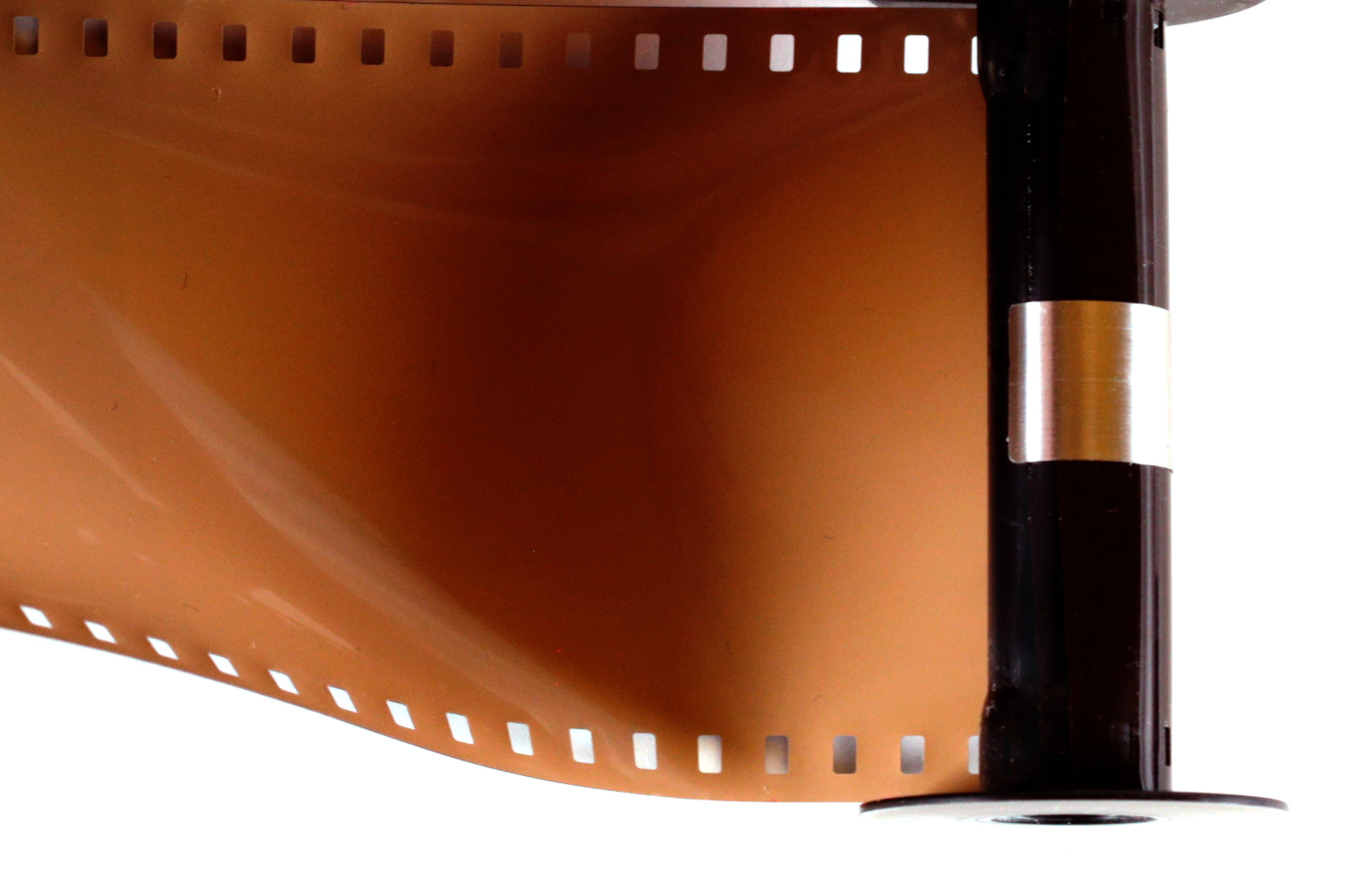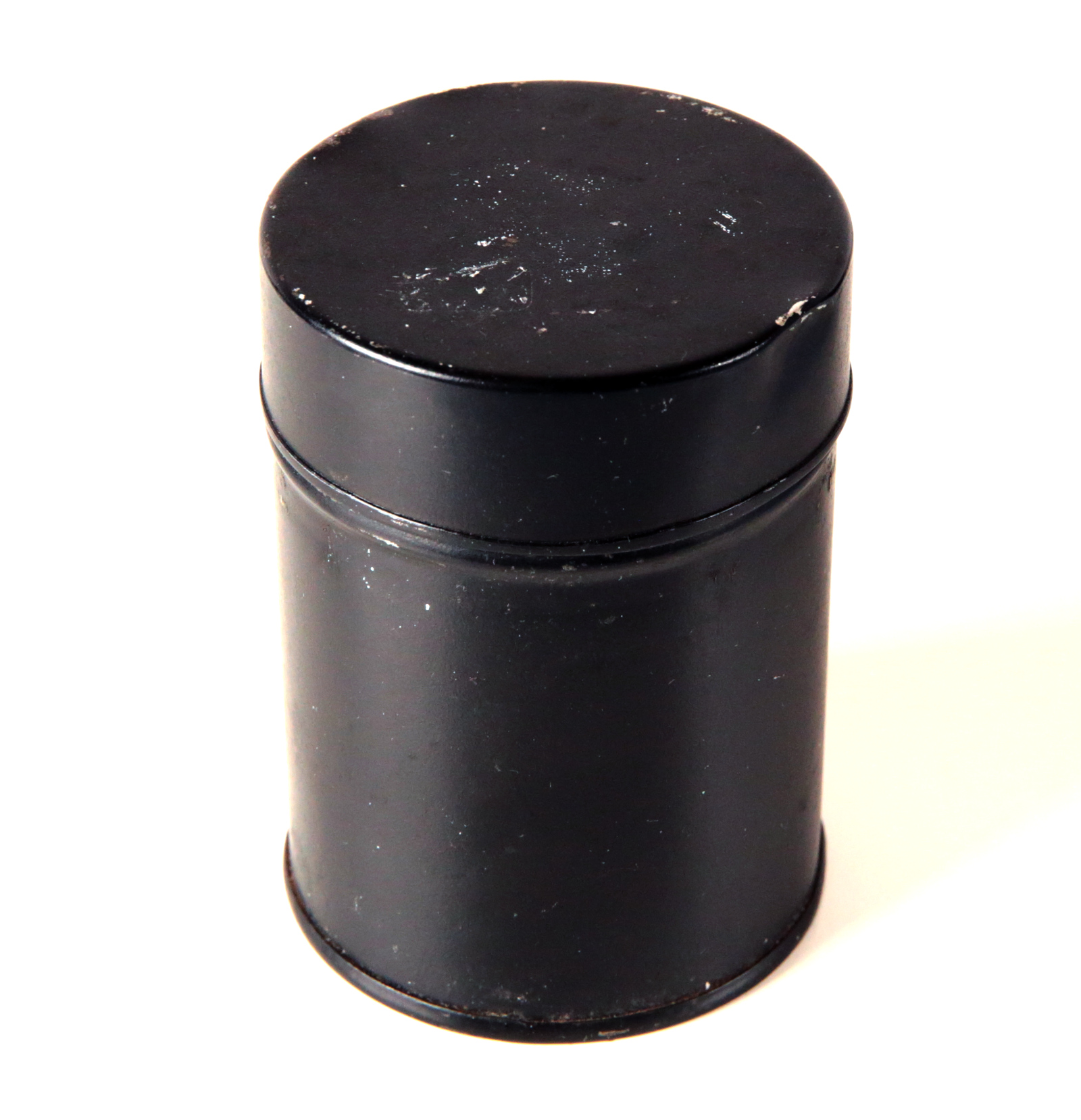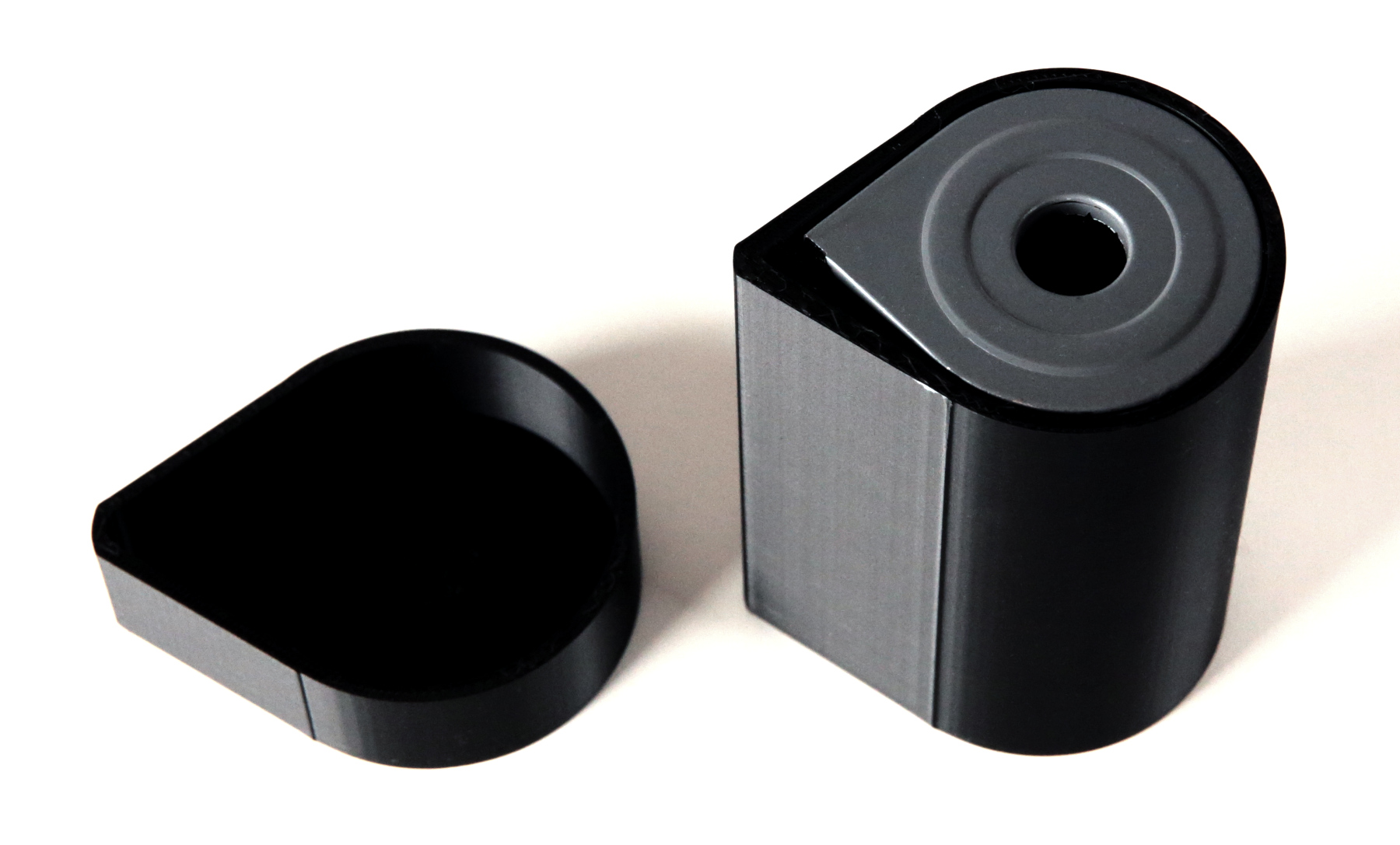Common Film Stocks
Ilford HP5+
This stock needs no introduction. One of the greatest BW stocks of all time, Ilford makes it in many formats, including 70mm. They only produce 70mm once per year, as part of their “ULF” program. You can order it at the proper time from one of their authorized ULF retailers (in the US: Freestyle Photo, ultrafineonline.com, or B&H). Note that there is a minimum total order quantity among all customers, so if enough people don't order this format in a given year, Ilford won't produce it until demand is higher (usually the following year). You won’t be charged anything if they don’t produce film in a given year.Unlike traditional 70mm manufacturers, this stock is produced in 50 ft lengths, not 100 ft. It comes as a roll without a spool. Ilford offers it in both perforated and unperforated versions-- unperforated is cheaper.
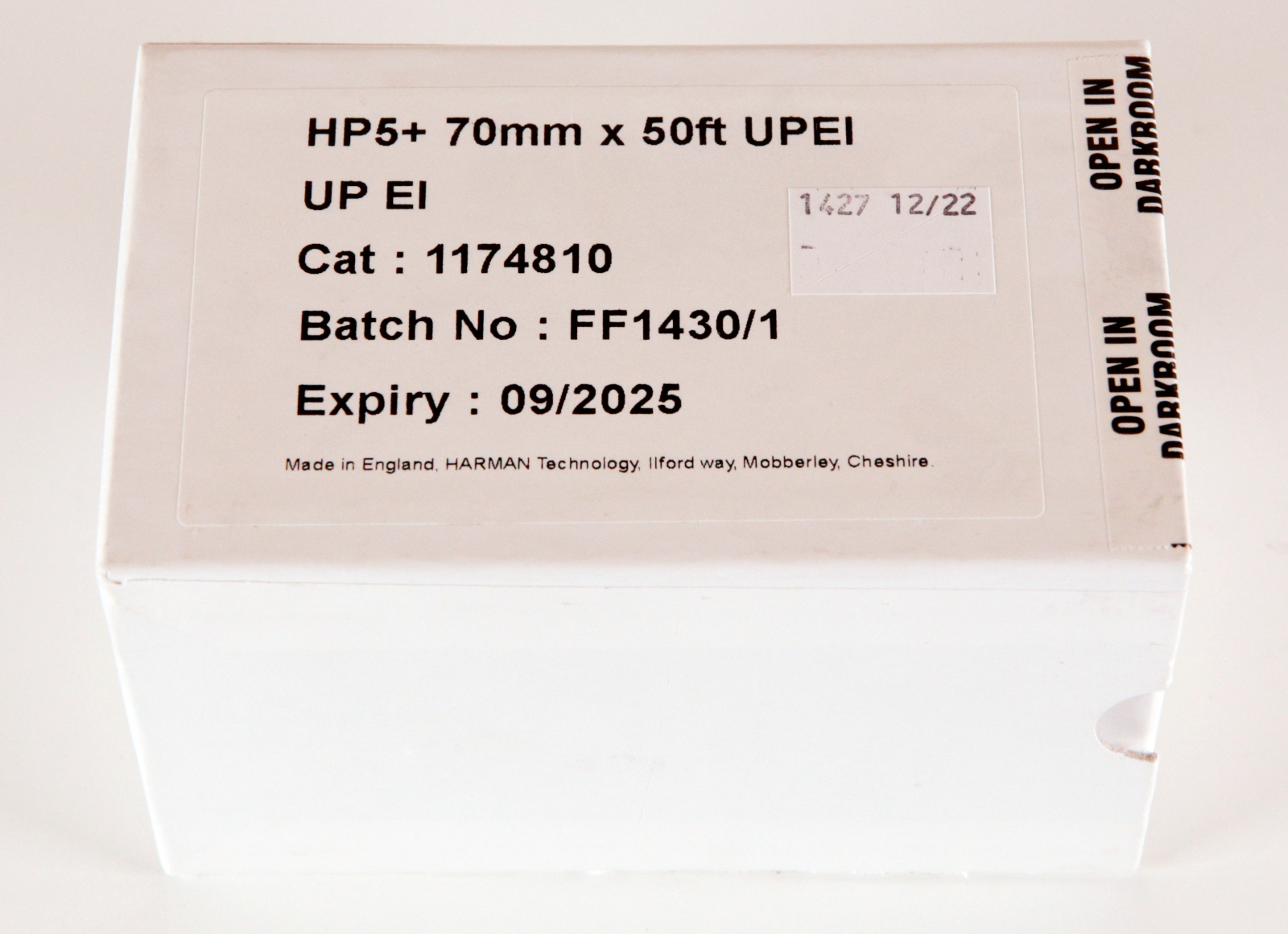
Ilford's HP5+ costs about the same per exposure in 70mm as 120, but you will gain the other advantages of 70mm discussed on the Intro page. Because HP5+ can be easily pushed 1-2 stops, this is also the fastest BW film available in 70mm at this point.
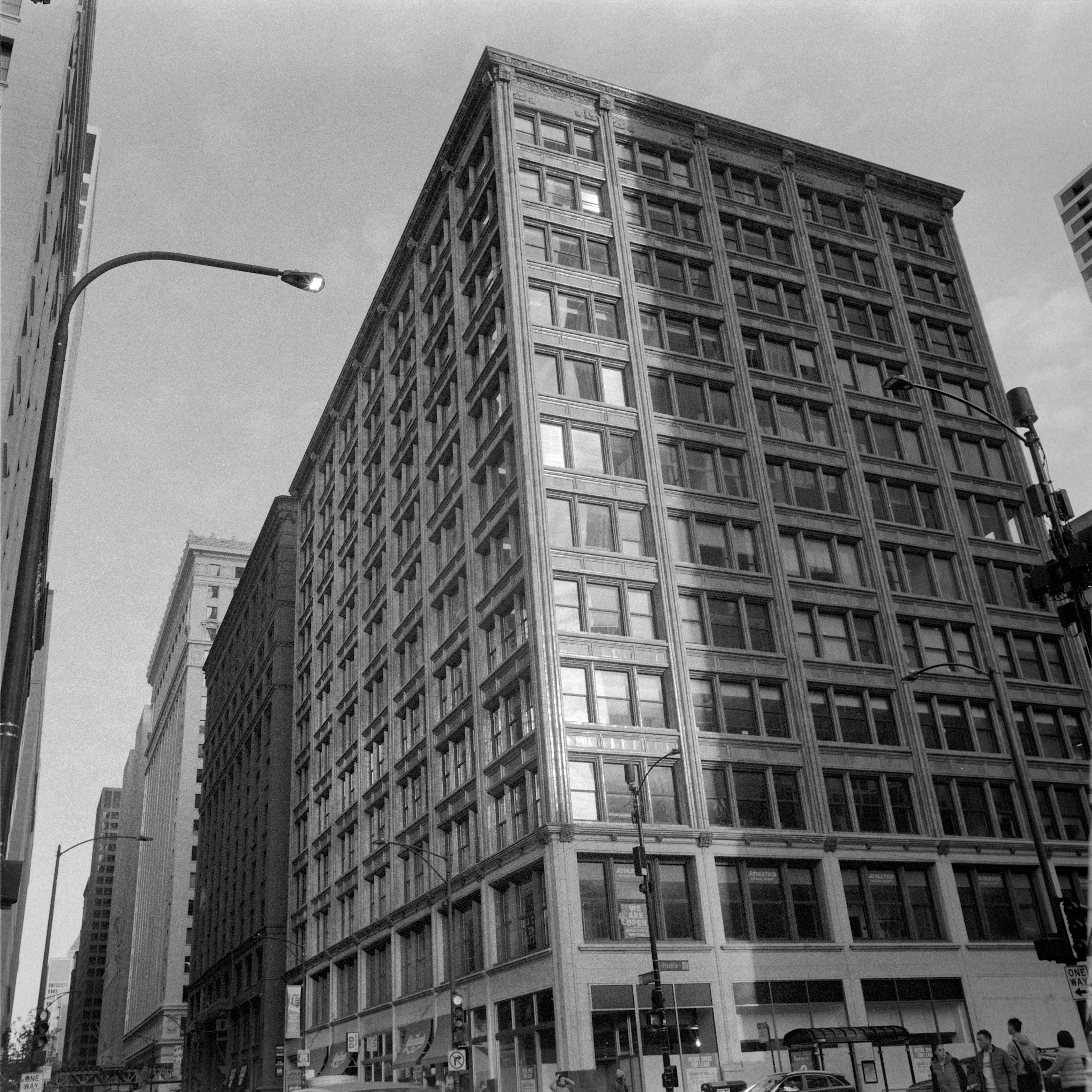
Rollei 400 Professional
This film, which is also marketed in 120 format as “Rollei IR” and “Rollei Retro 400” is produced by Agfa for Rollei. It was produced in 70mm format through 2019, but is now discontinued in this format. There's plenty of it around, with the final batches expired in 2022. This is a great BW film, with two special advantages: it was much cheaper than HP5+ while it was produced, and it has extended IR range. This means that you can shoot it normally or with an R72 filter for excellent infrared results. When shooting with an R72 filter, open up 6 stops from metered exposure.
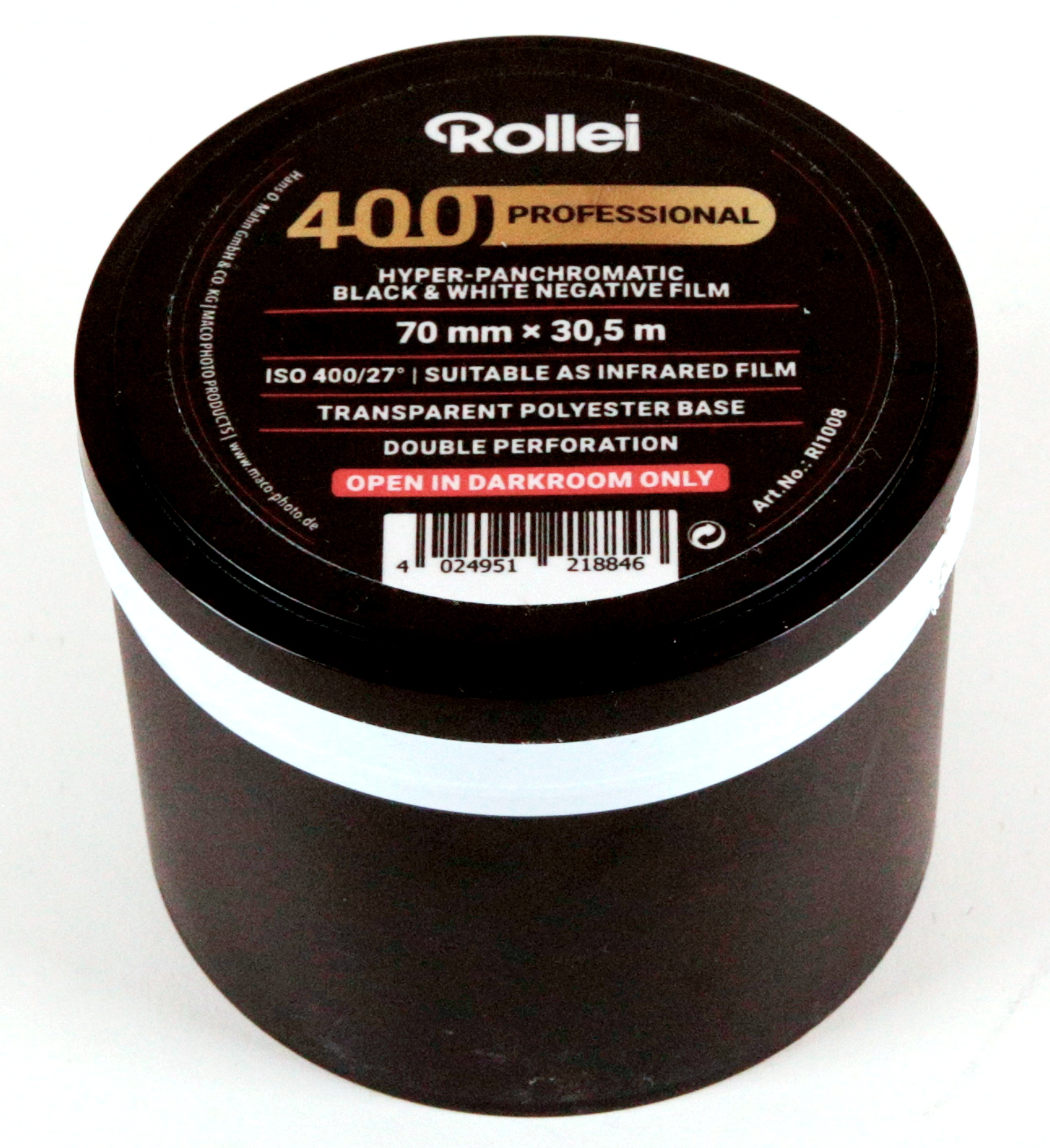
This film produces beautiful highlights when slightly overexposed. I recommend rating it at 320 ISO, or rating it at its box speed of 400 and pushing it ½ stop in development.
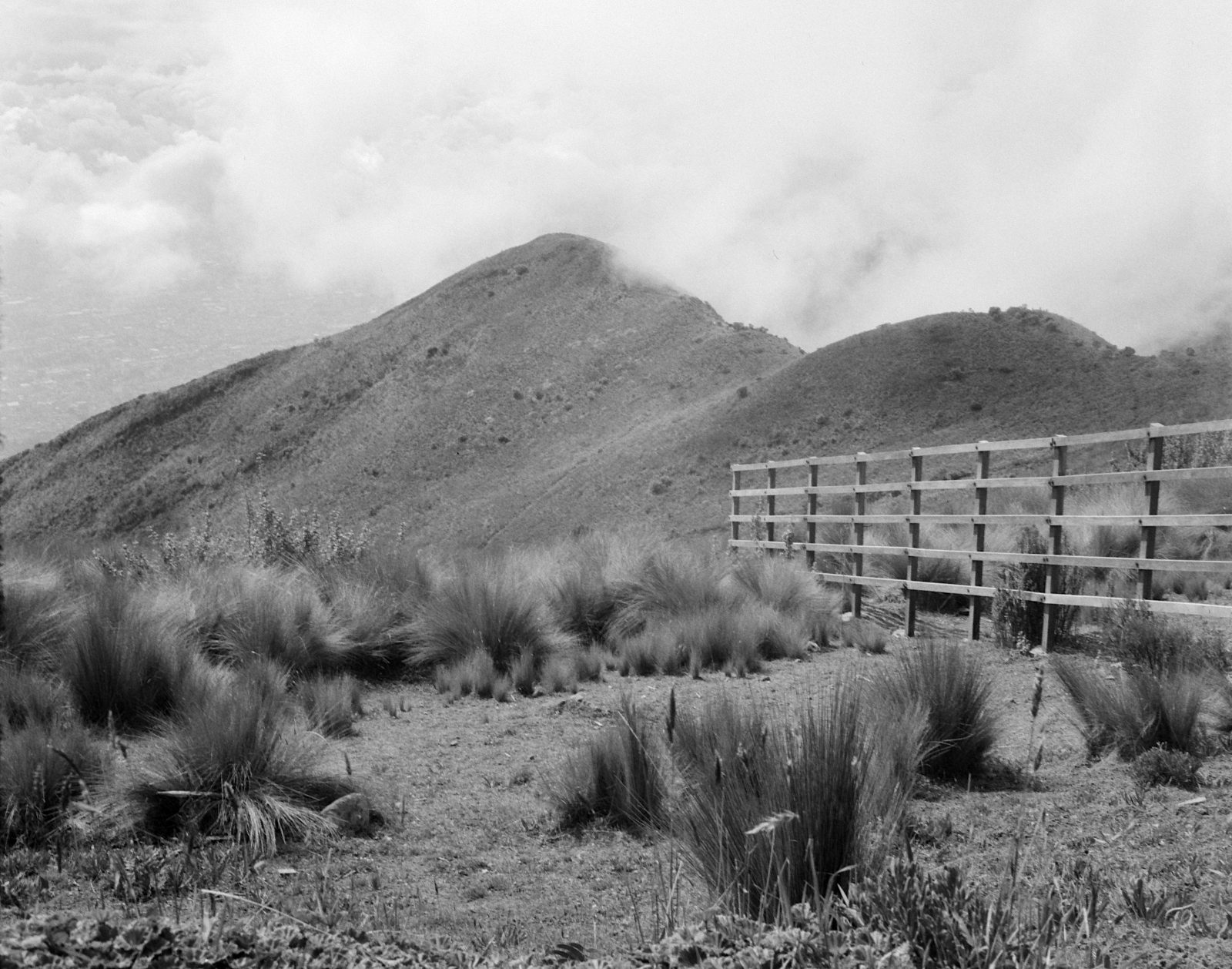
Agfa Aviphot Pan 200
This was Agfa's most popular aerial film and is thus frequently available on the used market for incredibly cheap prices. Agfa still manufactures it, but only on a special order basis. It was (and is) generally available in 30.3M (100ft) lengths, 45.7M (150ft) lengths, and 85M (250ft) lengths, as well as a variety of others, for compatibility with a wide range of aerial cameras. Aviphot Pan is usually perforated, occasionally unperforated.
Agfa reformulated this stock, changing its characteristics slightly, as Rollei 400 Professional. Nonetheless, the original Aviphot Pan is rated at half the speed, and because it is now expired stock, you will need to rate it even slower. We recommend rating this at 100 ISO, or rating it at 200 and pushing it one stop. It's a decent BW stock, suffering only from somewhat high contrast.
One thing to be aware of with this stock, however, is that it has a very thin base. This makes the film slightly more difficult to handle when developing (it isn't as rigid on a spiral, so you have to take greater care when loading it). Once you get used to it, however, it is not a significant problem.
For several years a seller in India has been dumping this stock on Ebay for incredibly low prices. Be aware, however, that that particular cache of this film is badly damaged (probably by heat) and exhibits pretty extreme clumping/mottling. I do not recommend purchasing from that cache as a result. The film, however, may be useful for testing/training purposes, and for special effects (i.e., when the clumped look enhances your vision).
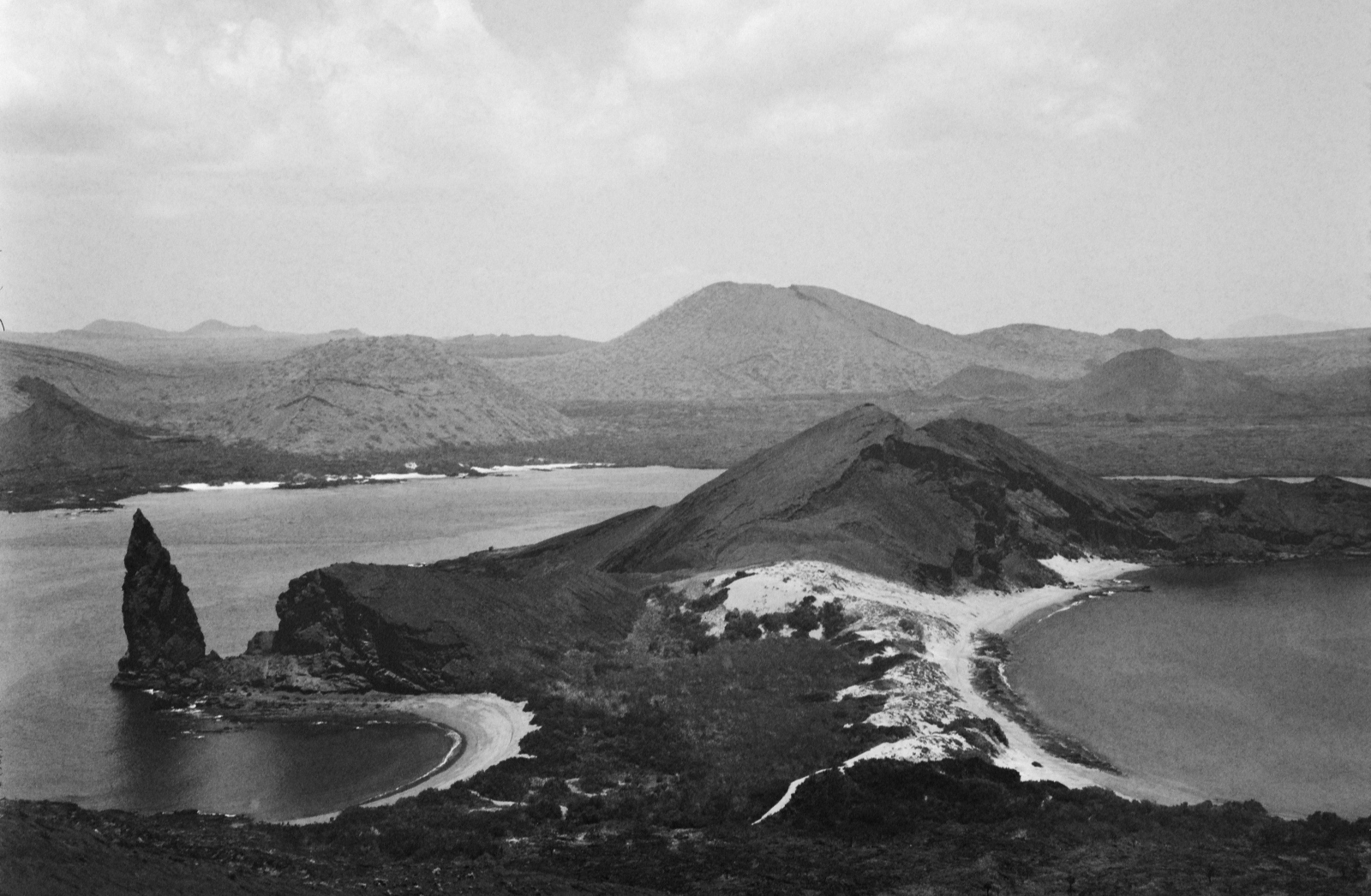
Kodak Plus-X Aerographic
This was Kodak's most popular aerial film for about 60 years. No matter how old it is, unless it exposed to light or stored in blistering heat for years, it holds up quite well. I have a 250 ft roll that expired in 1974 that I purchased for $20 that takes fabulous photos. Here is an example:
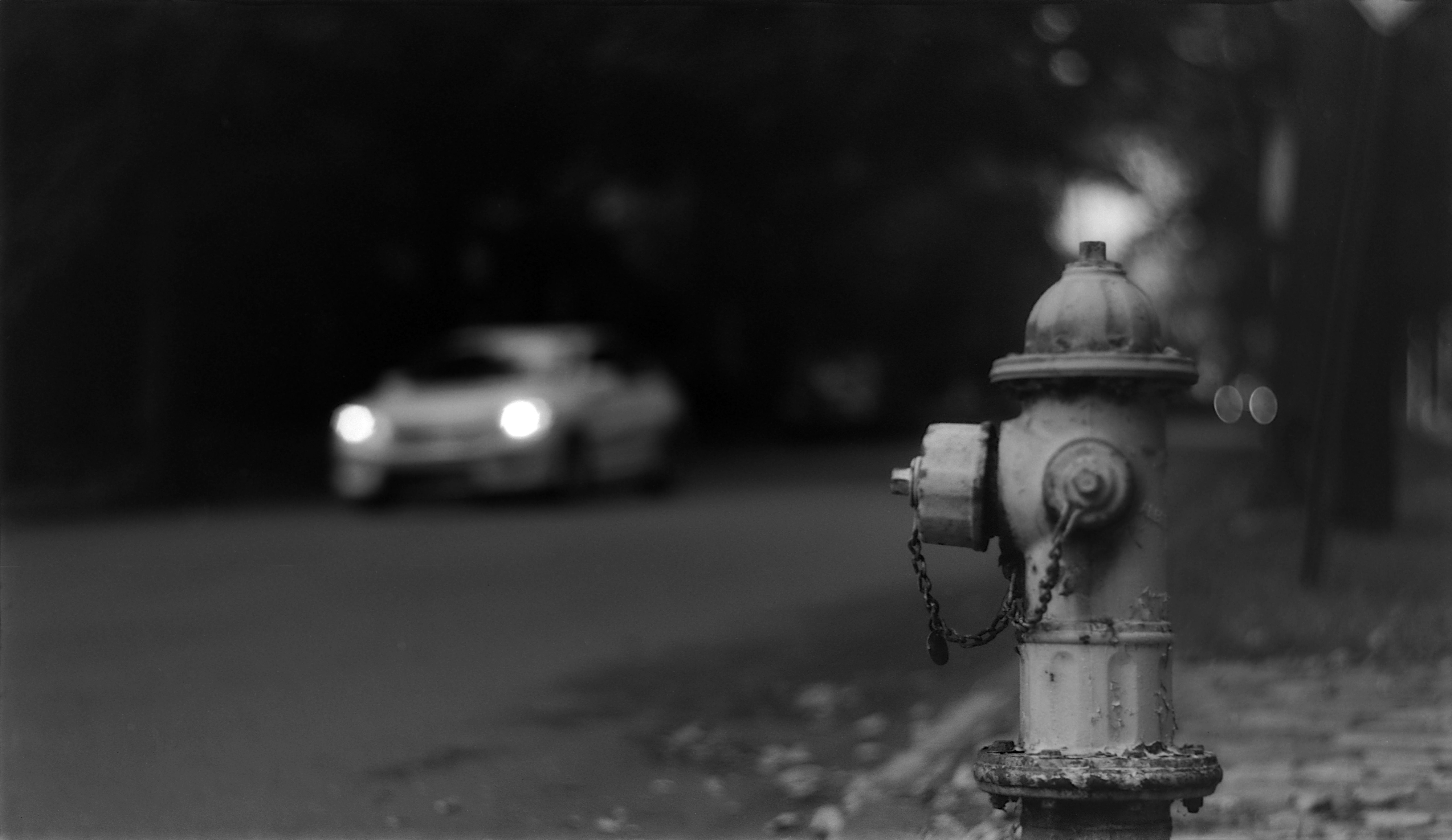
Plus-X expired in 1974
This is a fine-grained, beautiful stock, with slightly more latitude and less contrast than Agfa 200. Like that stock, however, it has a thin base, and therefore extra care should be taken when handling and developing it.
Originally this stock was rated at 125 ISO. This is one reason that it ages well (slower films are more stable over time). I rate stock that expired in 2005 or later at 100. I rate the 1974 stock at 40 ISO. These should give you a good starting point, but as with any expired film, shoot a test at different ISOs and see which one comes out best.
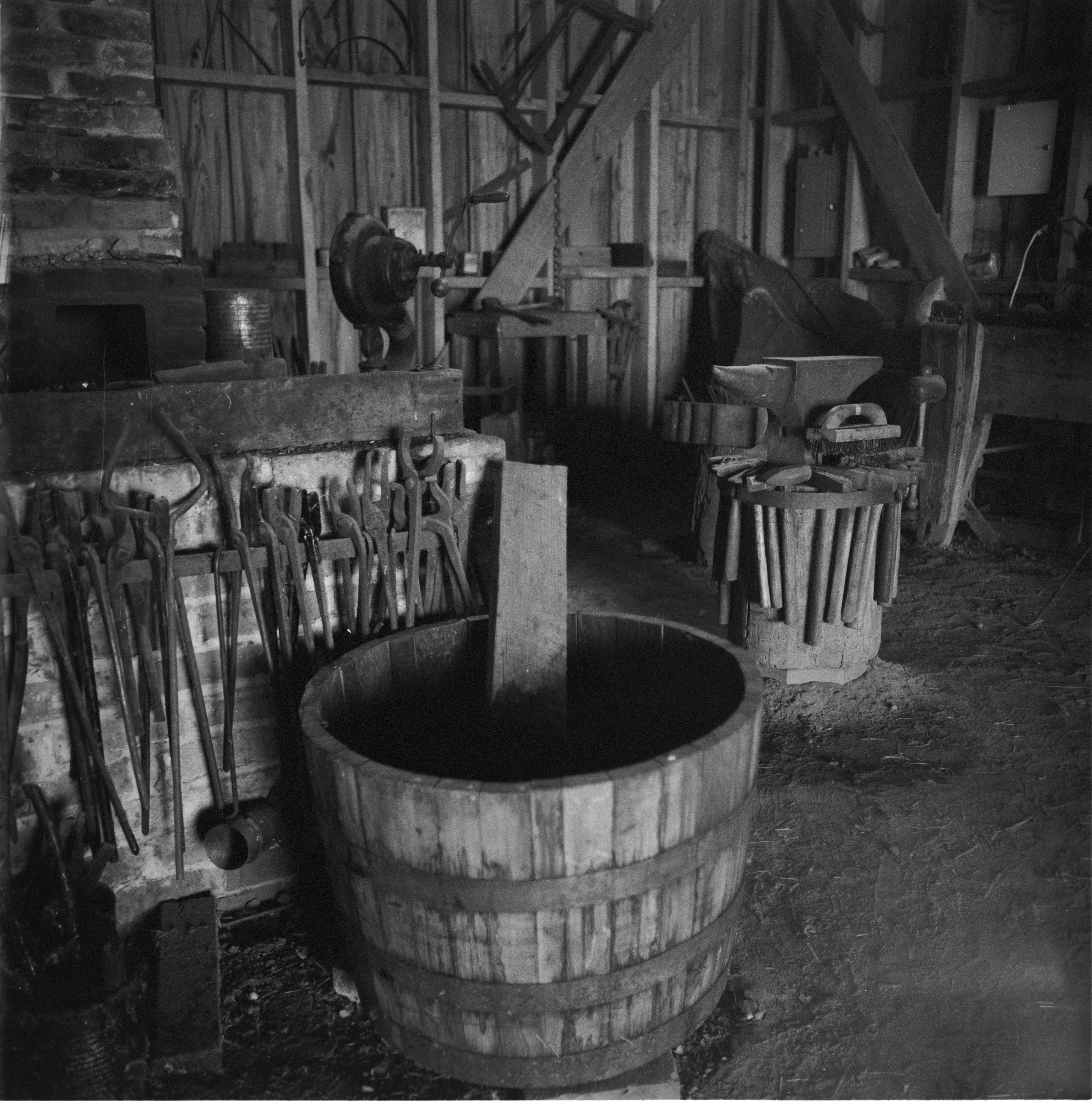
Plus-X expired in 2005
Kodak Portra 160
This was Kodak's most popular professional portrait film from 1998 to 2008 and was produced in 70mm in high quantities. It is sometimes available in larger lots on Ebay when portrait studios clear out their old stock. A lot is in the hands of 70mm enthusiasts at this point.
As a fairly volatile, professional color stock, storage conditions really affect Portra. Its sensitivity has somewhat decreased, but color shift is its bigger problem if it was exposed to heat. Well stored stock will have only minor shift that can be digitally corrected, but poorly stored stock can have significant color shift toward cyan. Often this is not an aesthetically pleasing shift. So some care should be taken to determine the storage conditions of this stock before you purchase it, or you will be rolling the dice. But of course, any film can be used artistically!
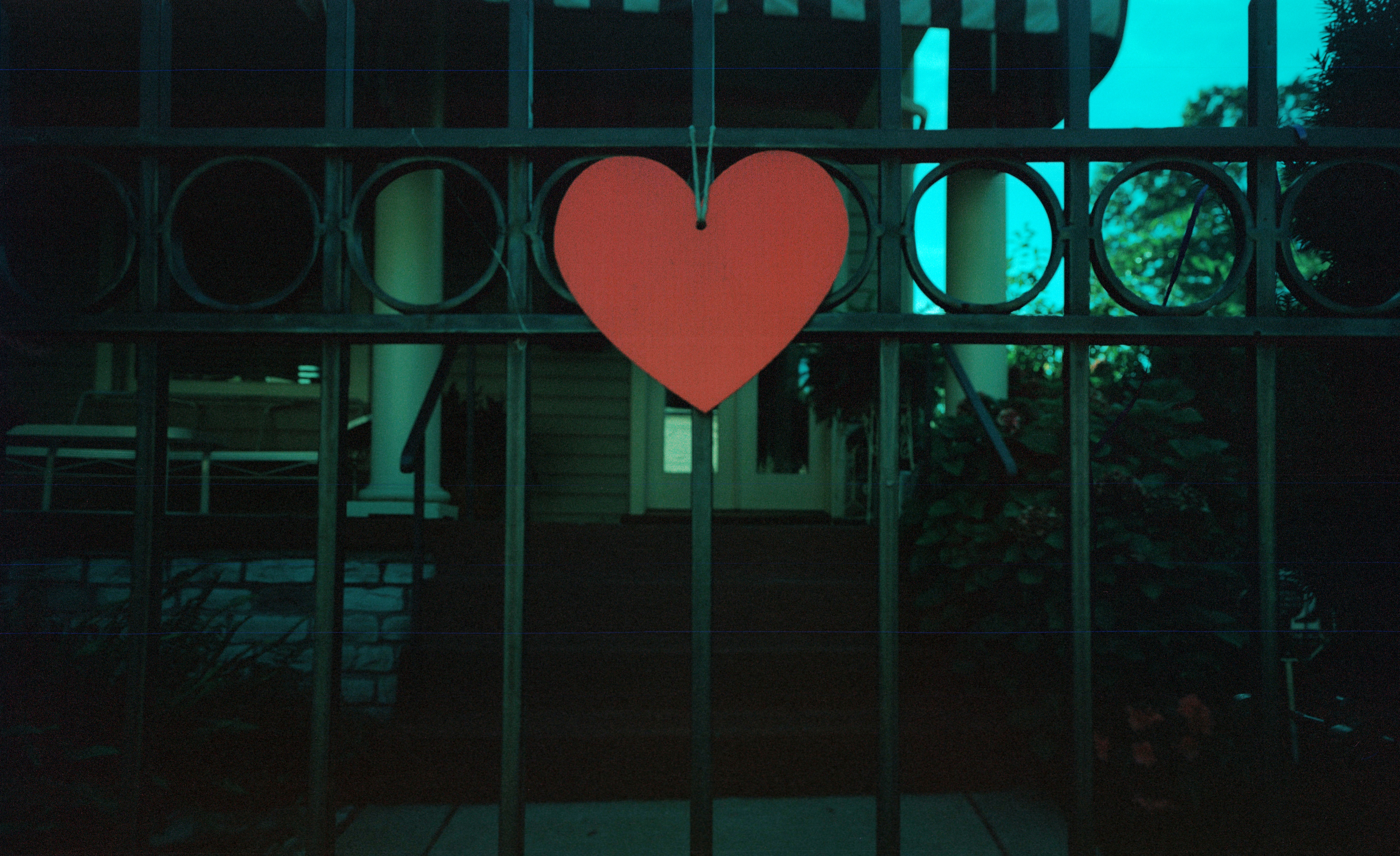
Here’s an example of badly heat/age damaged Portra.
Kodak Vericolor (VPS) III
This was Kodak's professional portrait film from 1987 to 1998, preceding Portra. It was produced in 70mm in very large quantities, and can thus be found sometimes on Ebay
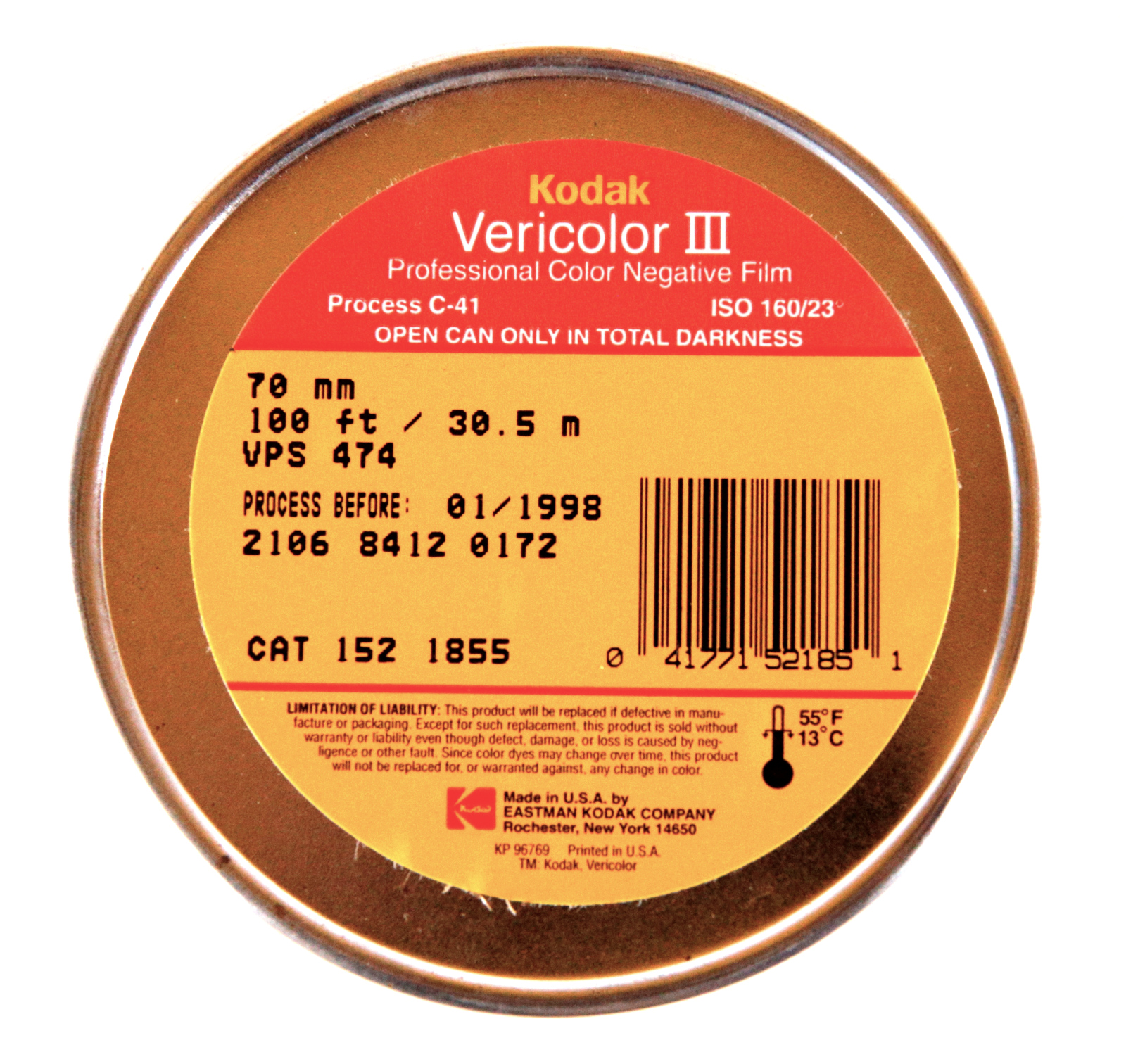
This film also loses sensitivity and shifts color as it ages, especially if subject to higher temperatures. Personally, I love the look of expired Vericolor III! It's my favorite expired color film, in any format.
Be prepared for lower ISOs, though. I rate my 1998 expired film at 40 ISO and it produces rich results.
This stock has a very thick base, and you may not be able to fit a full 15 ft in one cassette. I usually load 56 turns (about 10 ft) instead of 68.

Less Common 70mm Stocks
Kodak Portra 400: This was less popular than Portra 160, as most 70mm portrait film was used in studios with strobes. In any case, this film is more volatile than Portra 160 and thus suffers to a greater extent from loss of sensitivity and color shift over time. Not recommended unless you are sure that it has been continually cold stored since originally purchased.
Kodak Tri-X: This was a very popular 70mm stock in the 1960s – 1990s. Because it is generally quite old, and is a faster speed film with significant grain, it generally doesn’t age as well as Plus-X.
Kodak Ektachrome 64: The legendary slide film was popular in 70mm. Expired slide film is a risky bet because any color shifts are uncorrectable in your slides. However, slow speed slide film is quite stable and can last much longer, with fewer shifts, than color negative.
Kodak Aerochrome III: Probably Kodak's most legendary stock, this false color chrome (slide) film was only produced in aerial formats--usually 5" and 9.5", but occasionally in 70mm. It turns organic green objects to red, while leaving most other colors intact. However, this is as rare as hens' teeth. In the last decade I've only seen one 70mm roll for sale, and I purchased it (to save some and sell the rest).
Kodak Ektacolor Type S: This was Kodak's first color portrait film in the 70mm format, and was produced from the early 1960s to the mid 1970s. Unfortunately, it uses the older C-22 color development process, for which the original chemicals are no longer available. It can still be developed in BW chemistry, but what's the fun of that? M-Alchemy will attempt a processing run of this film in the future.
Kodak WL Surveillance: This stock was produced for security cameras. It is a higher speed BW stock that I have not personally used. It is grainy, but has its adherents. Though not as common as the others listed here, and usually older, it is sometimes available on Ebay. Another surveillance film produced in 70mm was Kodak Recording Film 2475, renowned for its high speed and extreme grain.
Agfa XPS 160: Agfa's professional color portrait film, competitor to Kodak's Vericolor III and Portra. A well regarded portrait film.
Agfa Color N400 / X400: Agfa's color aerial film. As a faster stock, it doesn't age as well. The N version has a regular “orange” base for printing, while the X version has a clear base for projection (and is also very easy to scan nowadays).
Agfa Color N200 / X200: Slower version of Agfa's color aerial film, but even less common.
Fuji CDU-II: This was Fuji's only 70mm stock, and has a special purpose: to duplicate medium format slides through contact printing. It is very slow (rated at 6 ISO if shot as a camera film). It can be cross processed as C41 to produce a negative.
Konica Pro 160: Another 160 ISO portrait stock produced during the heyday of 70mm portraiture.
There are many other film stocks that were released in 70mm. Explore and experiment!
Perforation Types
70mm film comes in three different types of perforation: Type I, Type II, and non-perf.
Type I has a pitch of 5.944mm and fairly large holes. It was an early standard, designed for long-roll portrait cameras. It is common in 1960s and 1970s portrait film, as well as some aerial film. To quickly check if you have Type 1 film, it has 5 perforations per inch (25mm).
Type II (4.75mm pitch, smaller holes) is the aerial camera standard and the most common (by volume) perforation to this day. Linhoff, Hasselblad, Mamiya, and Bronica backs are all designed to take this type of perforation because it was common by the time those 70mm systems were developed, and the designers felt that sprockets turned by perforations were the surest method of measuring film transport. To quickly check if you have Type 2 film, it has 6 perforations per inch (25mm).
Non-Perf film simply does away with the perforations altogether. 1980s and later portrait film often omits the perforations entirely. Such film is cheaper and easier to manufacture as it leads to less machine wear and fewer quality control rejects. Transet and RH50 large format backs work with this film natively. Other backs need to be modified to “all perf” to do so, as described in the Cameras and Backs page of this site.
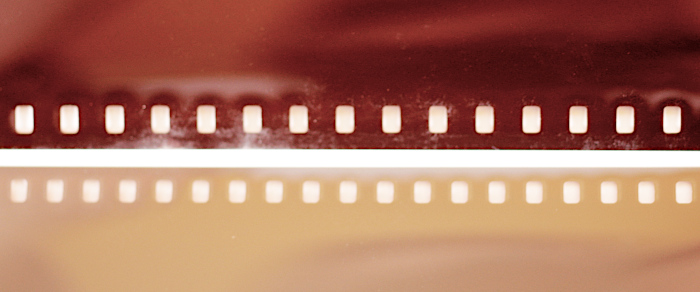
Type I perforations are on top, Type II on bottom
Rollei films are labeled “d.p.” which means Type II perfs, or “n.p.” which means non-perf.
Ilford 70mm film is labeled as either “UPEI” (unperforated) or “DPEI” (Type 2 perforations).
Core Variations
100 ft rolls of Kodak 70mm film most commonly come on Kodak’s excellent S-84 metal spool. This is a daylight spool, meaning that it somewhat protects the film from stray light hitting the top or bottom edges of the roll. (Do not, however, ever open a 100 ft can of film in anything but darkness!) The spool has square openings and fits nicely in 70mm cassette loaders.
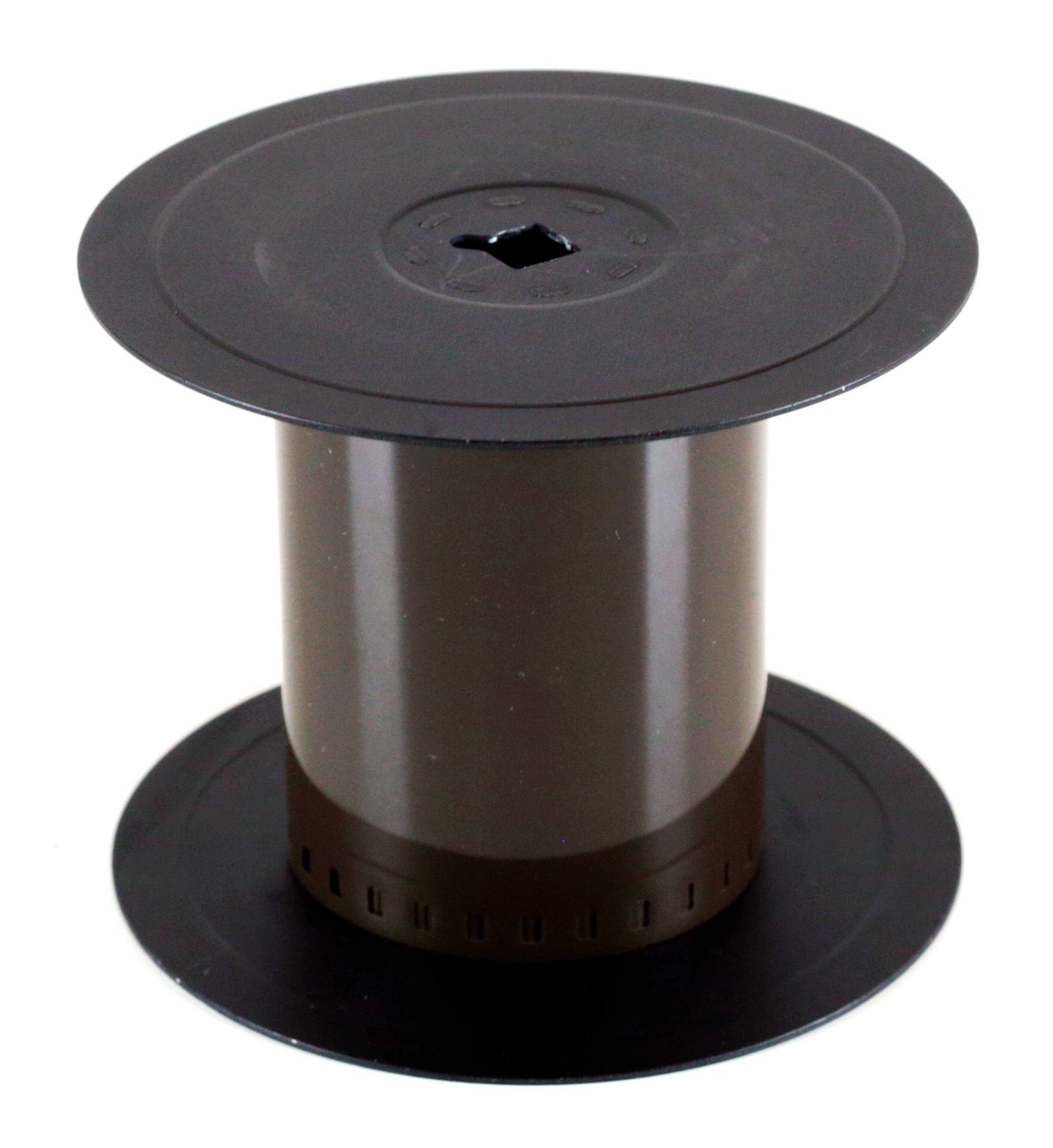
Kodak S-84 spool with film
However, both Kodak and other companies also produced rolls of 70mm with different cores. Kodak has a “Spec Number” system that specifies the perforation and core configuration of the film. The spec number is printed on all boxes and cans of 70mm film:
| Spec Number | Perforations | Core | Purpose | Notes |
|---|---|---|---|---|
| 473 | Unperforated | 1 ¼” plastic “J” core | Beattie Portronic, MacVan R-70 and other long-roll cameras | |
| 474 | Unperforated | S-84 metal spool | General use, subdued light loading | |
| 475 | Type II | S-84 metal spool | Cameras with Type II sprockets | Includes leader and trailer. Subdued light loading with acetate base; darkroom loading with Estar base |
| 477 | Type I | S-84 metal spool | Hulcher and similar long-roll cameras | Includes leader and trailer. |
| 480 | Unperforated | R-84 plastic spool | Short-roll cameras | Sequence repeat of 2.418” |
| 481 | Type II | R-84 plastic spool | Short-roll cameras | Sequence repeat of 2.418” |
| 488 | Type II | 70mm magazine (cassette) | Short-roll cameras | |
| 494 | Type II | S-241 Spool | Aerial cameras | |
| 535 | Varies | F-95 1 3/32 inch metal spool, no daylight flange | Specialty aerial cameras |
Unfortunately, other companies don’t have a similar system, and it can be difficult to tell what core you will receive until you open the film and feel it in darkness. Generally, portrait film often comes on the S-84 spool. Aerial films vary widely.
Agfa aerial films come on very plain cores that are basically just cylinders with large holes in the center. This appears to be similar or identical to Kodak spec 494.
Ilford’s 70mm film comes without any core at all.
How to Load a 70mm Cassette
You will start with a 100 ft (30.5 m) or 250 ft roll of film. This can only be opened in complete darkness. Film is unspooled from this roll and rolled around a 70mm cassette spool. The film is spooled on emulsion side down. Another way to remember this is that you use the same direction of curl to unroll from the large roll and to spool onto the cassette spool: you should be making use of the curl of the film, not fighting it.
You can do this carefully by hand, or use an Alden 70mm Daylight Loader, or use a Mercury Bulk Loader and spool in darkness.
I have not had good luck with the Daylight Loader. Not only does it have a “counter” that easily catches the film, but I've found that it tends to create hairline scratches in film, especially noticeable in some aerial films. And since you must load and unload it in the dark, there isn't much advantage to doing the actual rolling in the light: it isn't as if there's anything to see!
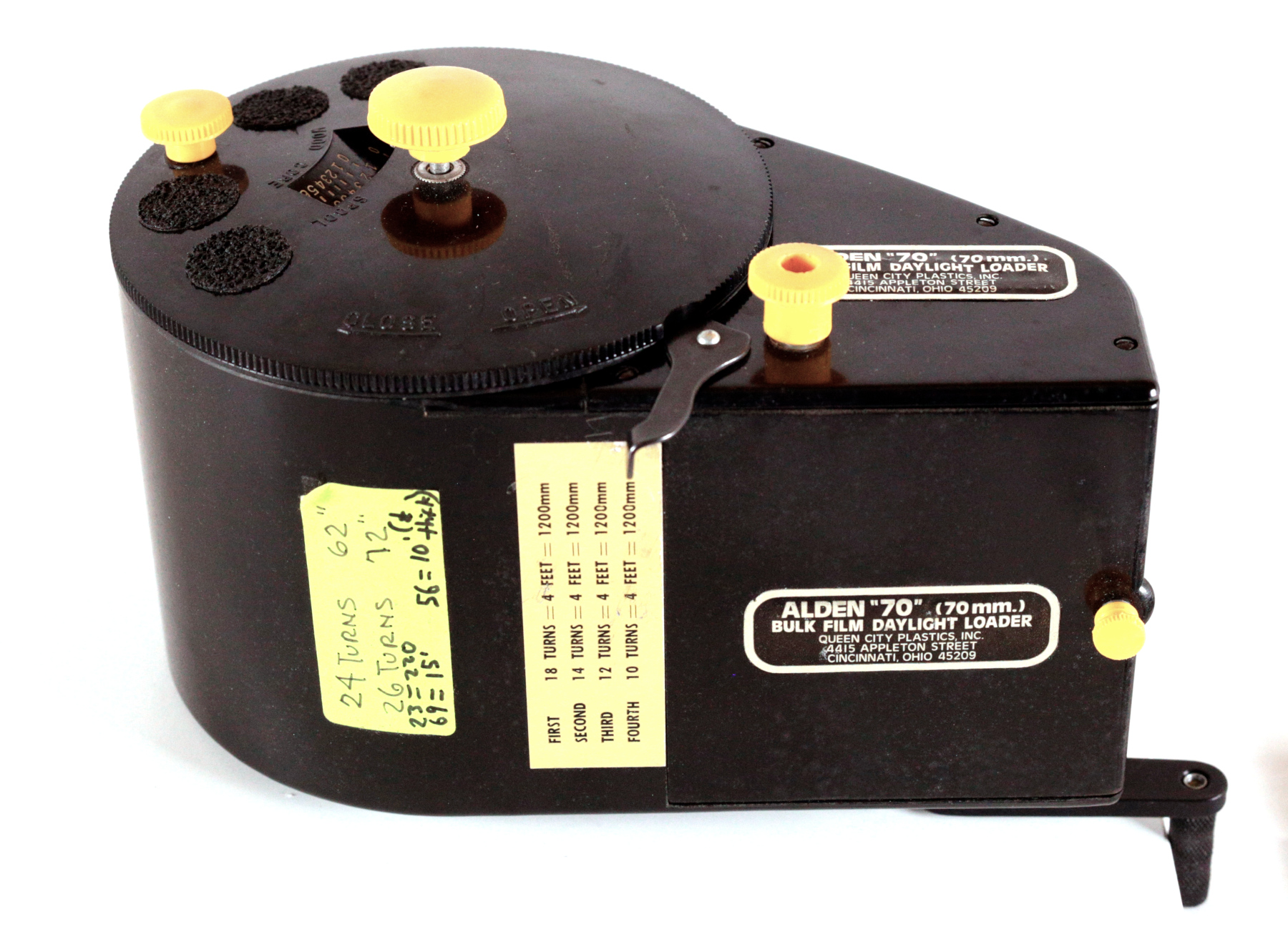
Nonetheless, some form of loader is useful, to make the process fast, safe for the film (minimizing dust, fingerprints, and scratches) and to accurately count how much film you’ve spooled. You can create a basic loader fairly easily.
Mercury Works recently reformulated its 70mm Cassette Loader kit. The Mercury kit comes with all the parts you need to load various types of 70mm film (which come on different spools, as explained in the 70mm Film section of this guide), as well as a comfortable crank for fast loading. This kit can load film from Kodak SP-84 spools, common cores, aerial cores, and even no core (Ilford). It includes attachments for all of these options.

No matter which method you use, you need to count the number of turns you make while winding the film on the cassette spool:
- 23 turns = 220 length (for developing in 220 reels)
- 46 turns = 10 ft length (thick film)
- 50 turns = 13 ft length (thick film)
- 60 turns = 13 ft length (thin film)
- 68 turns = full 15 ft length (thin film)
I recommend that you load onto a plain cassette spool, then (still in the dark) place the spool inside a cassette when you are done. This prevents extra wear and tear on the light seal of the cassette, and further reduces the potential for hairline scratches. However, if you wish, you can load directly into a cassette.
When placing your wound spool into your cassette, it is important that the emulsion remain on the inside of the curl. See the following image for the correct orientation of the film going out of or into a cassette:
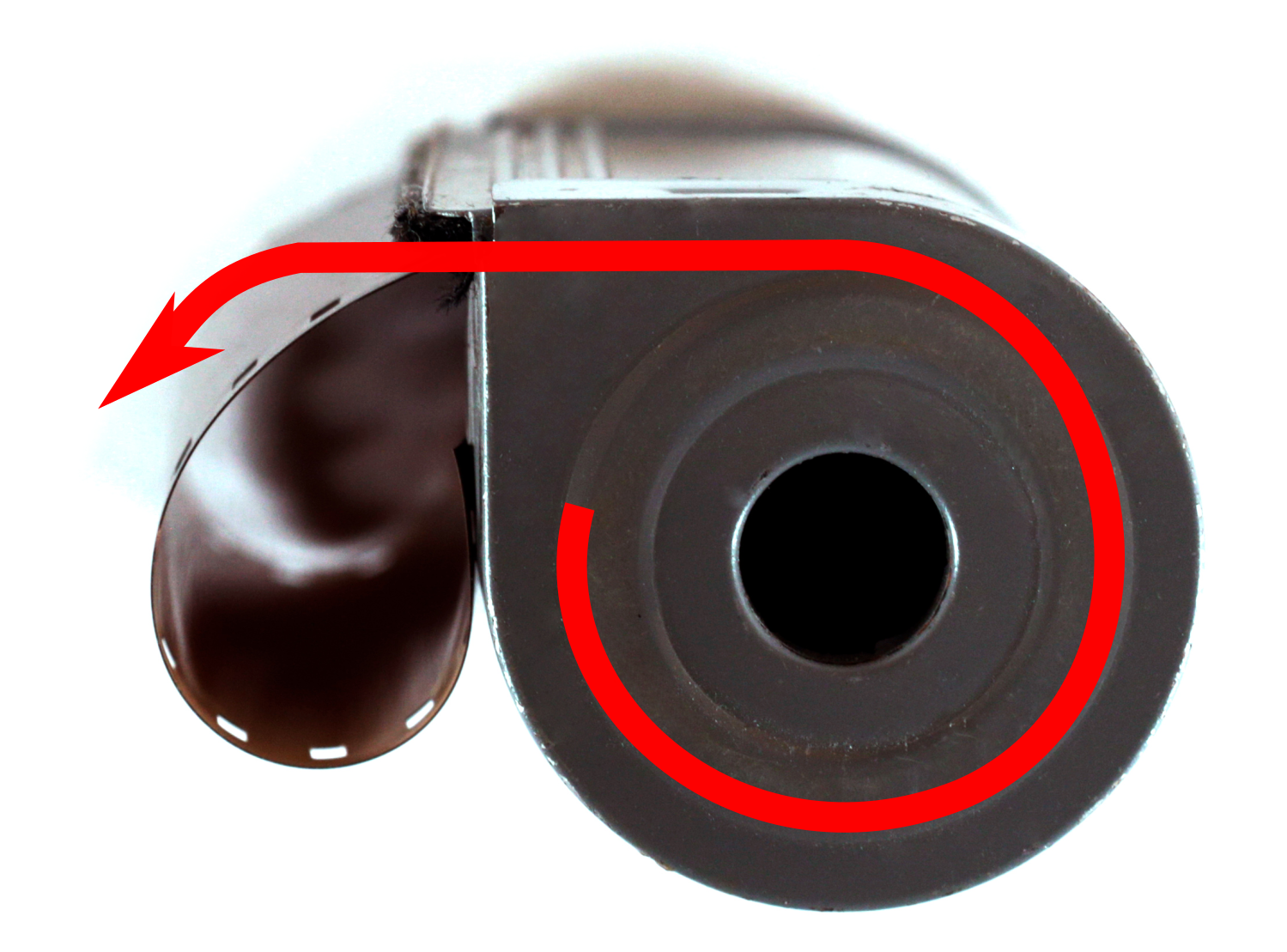
Leave an inch or two of film sticking out of the cassette. If your film disappears into the cassette, you will need to open it in complete darkness to pull out the end.
Don't forget to label your cassette with the film stock inside! You can do this with a small strip of tape on the flat section of the cassette.
Your loaded cassette can be stored inside an original Kodak cassette can, or more compactly and securely with a Mercury cassette canister.
Advanced: Adding a Leader
If you are shooting with especially rare or expensive film and don't want to lose any of it to the back loading process, you can attach an 11 inch piece of scrap film (preferably already developed). The film and leader must be perfectly aligned to load properly. If loading in a perforated-only back, the perforations should also line up. If shooting with an RH50 or an any-perf modified back, this doesn't matter.
This can be done quickly and easily with the Mercury Cassette Splicer. A guided weight holds your leader in place and your cassette slots in, perfectly aligning the film.
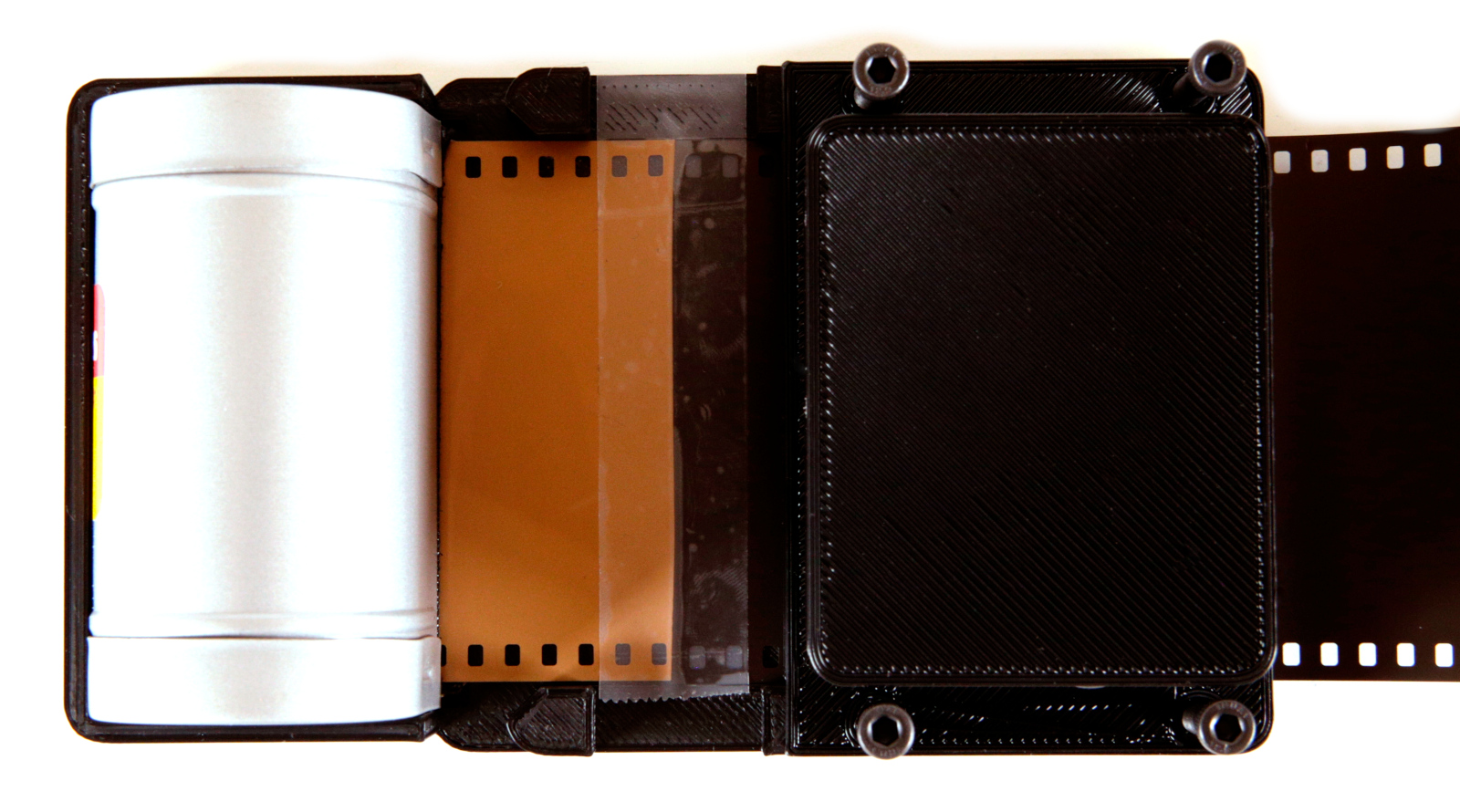
Tape the film on one side with Scotch Magic Tape or Kodak Film Splicing Tape. Allow it to overlap each edge a bit, then fold it over to cover the back side of the film splice. Now turn the spool from the opening on either the top or the bottom of the cassette to roll the leader into the cassette.
The Mercury 70mm Cassette Splicer can be purchased here.
